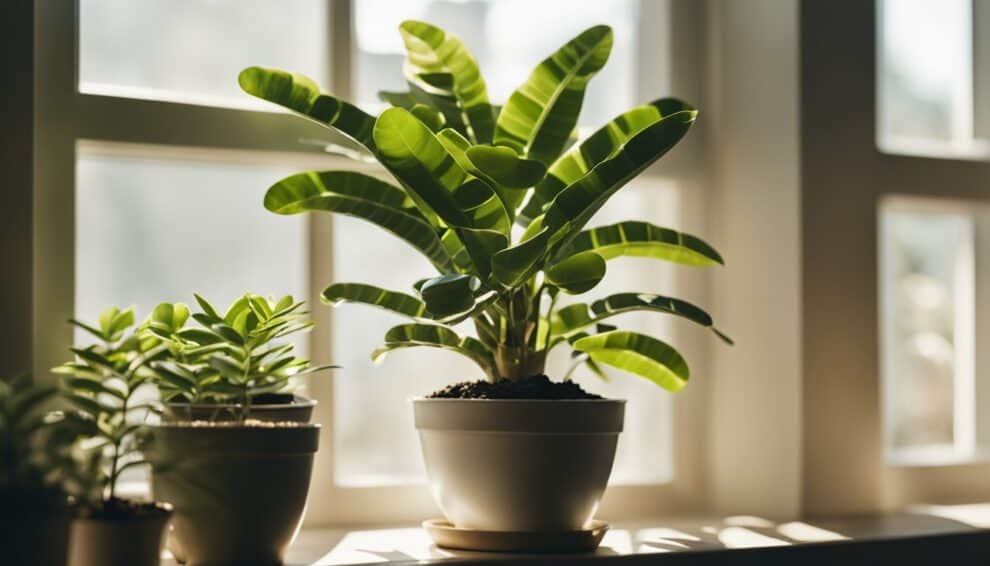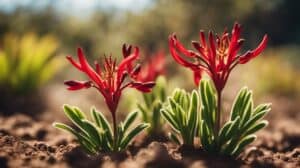Zamioculcas zamiifolia, commonly known as ZZ plant, is a popular houseplant that is loved for its attractive foliage and low-maintenance requirements.
One of the best things about ZZ plants is that they are easy to propagate, which means you can create new plants from your existing ones without much effort.
In this article, we will demystify the process of ZZ plant propagation and provide you with all the information you need to successfully propagate your ZZ plant.

Propagation is the process of creating new plants from existing ones.
ZZ plants can be propagated through several methods, including division, leaf cuttings, and stem cuttings.
Each method has its advantages and disadvantages, and the success rate may vary depending on factors such as the time of year, the health of the plant, and the propagation method used.
In this article, we will explore each propagation method in detail and provide you with step-by-step instructions on how to propagate your ZZ plant.
Whether you are a beginner or an experienced plant parent, this article will help you expand your plant collection and share the joy of ZZ plants with others.
Understanding ZZ Plant Propagation
The Biology of Zamioculcas Zamiifolia
Before diving into ZZ plant propagation, it’s important to understand the biology of Zamioculcas Zamiifolia.
ZZ plants are native to East Africa and belong to the Araceae family. They are known for their glossy, dark green leaves that can grow up to 3 feet long.
ZZ plants are also known for their ability to thrive in low light and drought conditions, making them a popular choice for indoor houseplants.
ZZ plants are propagated through rhizomes, which are underground stems that produce roots and shoots.
These rhizomes store food and nutrients, allowing the plant to survive in harsh conditions. When a rhizome produces a shoot, a new ZZ plant is born.
Propagation Methods Overview
There are several methods of ZZ plant propagation, each with its own advantages and disadvantages. The most common methods include:
- Division: This involves separating a mature ZZ plant into smaller sections, each with its own rhizome and shoots.
Division is a reliable method of propagation, but it requires an established ZZ plant to start with.
- Leaf cuttings: This involves taking a leaf cutting and allowing it to root in water or soil.
Leaf cuttings are a simple and low-cost method of propagation, but they can take longer to produce a mature plant.
- Rhizome cuttings: This involves taking a section of a rhizome and allowing it to root in soil.
Rhizome cuttings are a quick and easy method of propagation, but they can be less reliable than other methods.
No matter which method of propagation you choose, it’s important to provide your ZZ plant with the right conditions to encourage growth.
This includes bright, indirect light, well-draining soil, and regular watering.
With a little patience and care, you can successfully propagate your ZZ plant and enjoy its beauty for years to come.
Step-by-Step Propagation Guide

Propagating ZZ plants is an easy and rewarding process that can be done through various methods.
Here’s a step-by-step guide on how to propagate your Zamioculcas zamiifolia:
Leaf Cuttings
- Choose a healthy leaf from your ZZ plant. Make sure it is a mature leaf that is at least 4 inches long.
- Using a sharp, clean knife, cut the leaf at its base, making sure to include a small portion of the stem.
- Allow the leaf to dry for a few hours to prevent rotting.
- Dip the cut end of the leaf into rooting hormone powder.
- Plant the leaf cutting into a well-draining potting mix. Keep the soil moist but not waterlogged.
- Place the pot in a warm and bright spot, but avoid direct sunlight.
- In about 6-8 weeks, you should see new growth emerging from the base of the leaf.
Division
- Choose a mature ZZ plant with multiple stems.
- Carefully remove the plant from its pot and gently separate the stems.
- Cut any damaged or unhealthy roots.
- Plant each stem in a separate pot filled with well-draining potting mix.
- Water the newly potted plants and place them in a warm and bright spot, but avoid direct sunlight.
- The separated stems should start producing new growth within a few weeks.
Stem Cuttings
- Choose a healthy stem from your ZZ plant that has at least two leaves.
- Using a sharp, clean knife, cut the stem just below a node.
- Dip the cut end of the stem into rooting hormone powder.
- Plant the stem cutting into a well-draining potting mix. Keep the soil moist but not waterlogged.
- Place the pot in a warm and bright spot, but avoid direct sunlight.
- In about 6-8 weeks, you should see new growth emerging from the top of the stem cutting.
By following these simple steps, you can easily propagate your ZZ plant and enjoy more of these beautiful and resilient plants in your home or office.
Caring for Your New ZZ Plants

After successfully propagating your ZZ plant, it’s important to provide proper care to ensure its growth and health.
Here are some tips to help you care for your new ZZ plants.
Post-Propagation Care
Once the ZZ plant has been propagated, it’s important to give it some time to adjust to its new environment.
The first few weeks after propagation are critical for the plant’s survival.
Lighting: ZZ plants prefer moderate to low light conditions, so place your new plant in an area that receives indirect sunlight.
Direct sunlight can damage the plant’s leaves.
Watering: ZZ plants are drought-resistant and can survive for long periods without water.
It’s important not to overwater the plant as this can cause root rot. Water the plant only when the soil is dry to the touch.
Soil: ZZ plants prefer well-draining soil. Use a potting mix that contains perlite or sand to ensure proper drainage.
Temperature and Humidity: ZZ plants prefer warm temperatures between 60°F to 75°F.
They can tolerate low humidity levels, but it’s important to keep the plant away from cold drafts.
Troubleshooting Common Issues
Even with proper care, ZZ plants can still experience some common issues.
Here are some troubleshooting tips to help you identify and resolve these issues.
Yellow Leaves: Yellow leaves can be a sign of overwatering or exposure to direct sunlight.
Check the soil moisture level and move the plant to a location that receives indirect sunlight.
Brown Tips: Brown tips can be a sign of underwatering or low humidity levels.
Increase the frequency of watering or mist the leaves with water to increase humidity.
Pests: ZZ plants are relatively pest-resistant, but they can still be affected by mealybugs or spider mites.
Use a neem oil solution or insecticidal soap to treat the plant.
By following these tips, you can provide proper care for your new ZZ plants and enjoy their beauty for years to come.
Frequently Asked Questions

How can I propagate a ZZ plant from a leaf cutting?
Propagating a ZZ plant from a leaf cutting is possible, but it can be a bit tricky. First, select a healthy leaf from the plant and cut it near the base.
Next, allow the cut end to dry for a few hours to prevent rotting.
Finally, plant the cutting in a well-draining soil mix and keep it moist until new growth appears.
What’s the best method to propagate a ZZ plant in water?
Propagating a ZZ plant in water is a popular method because it’s easy and effective.
Simply cut a stem from the plant and place it in a container of water. Change the water every few days to prevent bacterial growth and wait for roots to form.
Once the roots are well-established, you can transplant the cutting into soil.
How long does ZZ plant propagation typically take?
The time it takes to propagate a ZZ plant can vary depending on the method used.
Leaf cuttings can take several months to produce new growth, while stem cuttings can root in as little as a few weeks.
It’s important to be patient and allow the plant time to develop.
Is it possible to propagate a ZZ plant from a broken piece?
Yes, it is possible to propagate a ZZ plant from a broken piece. Simply take the broken piece and plant it in a well-draining soil mix.
Keep the soil moist and wait for new growth to appear.
What are the steps to propagate a ZZ plant from a stem cutting?
To propagate a ZZ plant from a stem cutting, select a healthy stem and cut it just below a node.
Remove the lower leaves and dip the cut end in rooting hormone. Plant the cutting in a well-draining soil mix and keep it moist until roots develop.
Once the roots are established, you can transplant the cutting into a larger pot.
When is the ideal time to divide a ZZ plant for propagation?
The ideal time to divide a ZZ plant for propagation is in the spring or early summer when the plant is actively growing.
Simply remove the plant from its pot and gently separate the root ball into smaller sections. Replant the sections in fresh soil and water thoroughly.













